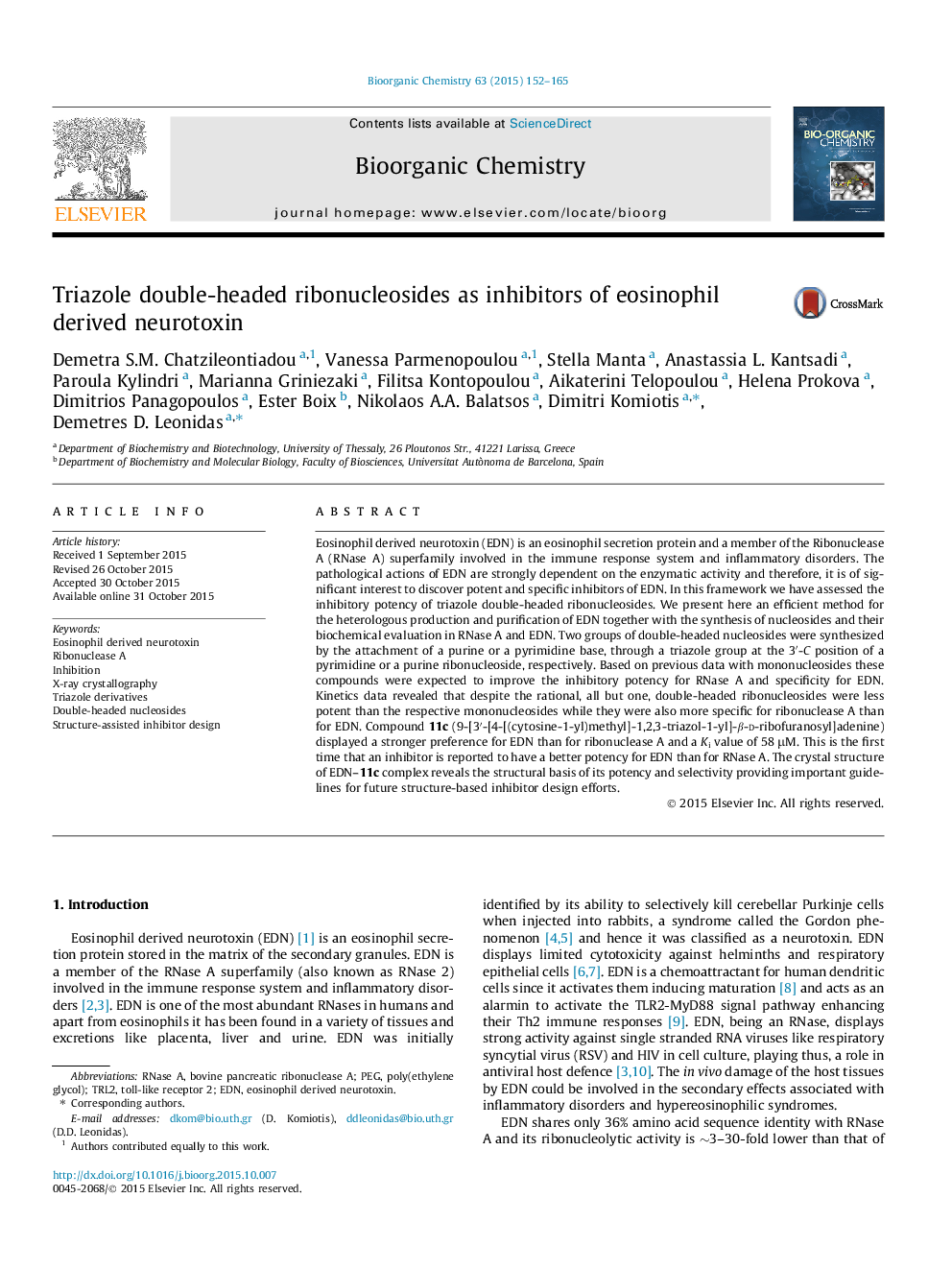| Article ID | Journal | Published Year | Pages | File Type |
|---|---|---|---|---|
| 1355766 | Bioorganic Chemistry | 2015 | 14 Pages |
•Efficient method for the heterologous production and purification of EDN.•Synthesis of two groups of double-headed nucleosides.•Biochemical evaluation of double-headed nucleosides in RNase A and EDN.•Compound 11c displayed a stronger preference for EDN (Ki of 58 μM) than for RNAse A.
Eosinophil derived neurotoxin (EDN) is an eosinophil secretion protein and a member of the Ribonuclease A (RNase A) superfamily involved in the immune response system and inflammatory disorders. The pathological actions of EDN are strongly dependent on the enzymatic activity and therefore, it is of significant interest to discover potent and specific inhibitors of EDN. In this framework we have assessed the inhibitory potency of triazole double-headed ribonucleosides. We present here an efficient method for the heterologous production and purification of EDN together with the synthesis of nucleosides and their biochemical evaluation in RNase A and EDN. Two groups of double-headed nucleosides were synthesized by the attachment of a purine or a pyrimidine base, through a triazole group at the 3′-C position of a pyrimidine or a purine ribonucleoside, respectively. Based on previous data with mononucleosides these compounds were expected to improve the inhibitory potency for RNase A and specificity for EDN. Kinetics data revealed that despite the rational, all but one, double-headed ribonucleosides were less potent than the respective mononucleosides while they were also more specific for ribonuclease A than for EDN. Compound 11c (9-[3′-[4-[(cytosine-1-yl)methyl]-1,2,3-triazol-1-yl]-β-d-ribofuranosyl]adenine) displayed a stronger preference for EDN than for ribonuclease A and a Ki value of 58 μM. This is the first time that an inhibitor is reported to have a better potency for EDN than for RNase A. The crystal structure of EDN–11c complex reveals the structural basis of its potency and selectivity providing important guidelines for future structure-based inhibitor design efforts.
Graphical abstractFigure optionsDownload full-size imageDownload as PowerPoint slide
